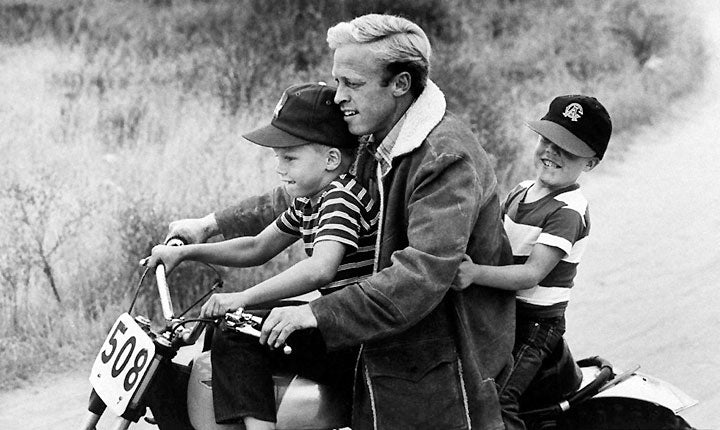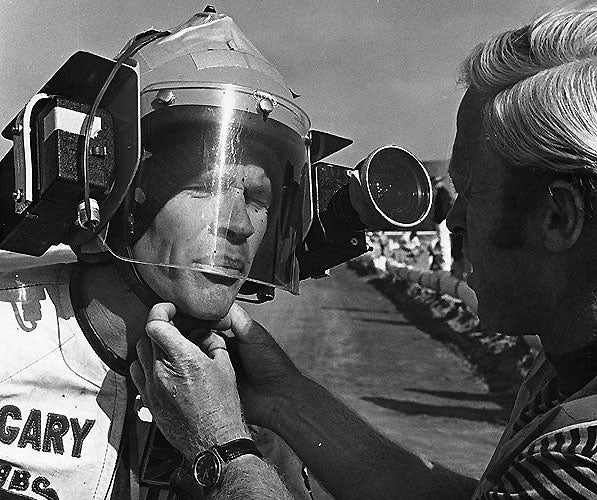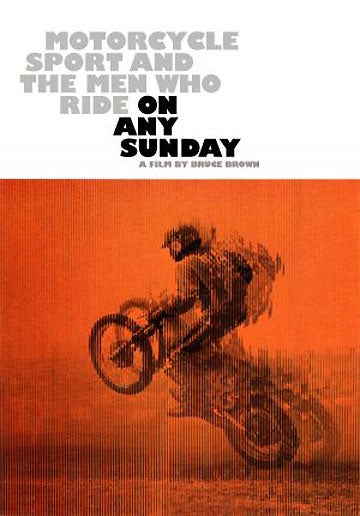Bruce Brown, the filmmaker who captured the hearts and imaginations, and inspired men, women and children of all ages with two iconic action sports documentaries, the surfing documentary The Endless Summer (1966) and the motorcycle documentary On Any Sunday (1971), passed away Sunday, December 10, at the age of 80.

Brown was born in San Francisco, California but his family relocated to Southern California shortly thereafter, and he began surfing at age 11. Surfing and surfboards would not only become a lifelong passion, they would serve as a vehicle to Brown’s true calling as a documentary filmmaker. After graduating from Wilson High School in Long Beach in 1955, Brown enlisted in the Navy and went to submarine school where he graduated at the top of his class and was given his choice of duty. Brown chose Hawaii because he knew he would be able to continue his passion for surfing on what were considered to be the best waves on the planet.
Even before that, Brown has begun shooting 8mm films of his surf adventures with friends just so that he could show his mother what surfing was all about. He quickly developed an eye for capturing the exhilarating action that makes the sport such a spectacle. After he was honorably discharged from the Navy in 1957, he moved to San Clemente, California, to take a job as a lifeguard when he was approached by surfing and board shaper buddy Dale Velzy, who commissioned him to make a film that promoted Velzy’s surf team. The film became Brown’s first surfing documentary, Slippery When Wet (1958). It was only the beginning, as Brown would go on to create several more surfing films, including Surf Crazy (1959), Barefoot Adventure (1960), Surfing Hollow Days (1961) and Waterlogged (1962).
Disillusioned with the image of surfing portrayed by both the media and by Hollywood, Brown came up with the vision for his most popular surfing film, the iconic The Endless Summer (1966) in which he took young Southern California surfers Robert August and Mike Hynson on a global surf safari, capturing all of the different breaks around the world while also giving viewers an insight into the humanity and culture that envelop the sport. The Endless Summer exploded in popularity, selling out theaters all across the United States and establishing Brown as the premier filmmaker of the genre for decades to come.

 An avid motorcyclist, Brown credited a visit to former Los Angeles racing landmark Ascot Park as the inspiration for a film that would redefine the sport of motorcycling for generations, On Any Sunday (1971) was a radical departure from the outlaw biker films that Hollywood was only too happy to spit out, On Any Sunday followed the exploits of motorcycle racing’s top professionals of the era, including 1969 AMA Grand National Champion Mert Lawwill, dirt-tracker and road racer Cal Rayborn and amateur off-road star Malcolm Smith as they displayed their motorcycling skills in the competitive arena. The film was produced by none other than legendary actor and motorcycle enthusiast Steve McQueen, who stars in it right alongside the cast of professional and amateur racers.
An avid motorcyclist, Brown credited a visit to former Los Angeles racing landmark Ascot Park as the inspiration for a film that would redefine the sport of motorcycling for generations, On Any Sunday (1971) was a radical departure from the outlaw biker films that Hollywood was only too happy to spit out, On Any Sunday followed the exploits of motorcycle racing’s top professionals of the era, including 1969 AMA Grand National Champion Mert Lawwill, dirt-tracker and road racer Cal Rayborn and amateur off-road star Malcolm Smith as they displayed their motorcycling skills in the competitive arena. The film was produced by none other than legendary actor and motorcycle enthusiast Steve McQueen, who stars in it right alongside the cast of professional and amateur racers.
A box office smash, On Any Sunday achieved Brown’s mission of bringing motorcycling to the masses via the silver screen. The film is credited for the explosion in popularity the sport enjoyed during the 1970s, and its message was strong enough to earn it an Academy Award nomination.
After retiring from filmmaking, Brown moved north of Santa Barbara around 1980, where he lived with his beloved wife, Patricia, until her passing. Brown made one more surfing film, The Endless Summer II (1994). In later years, he would be recognized for his contributions to surfing and motorcycling by being inducted into the Surfing Hall of Fame (2009) and the AMA Hall of Fame (2012).
“Bruce Brown’s influence on motorcycling in the 1970s was profound,” said American Motorcyclist Association President and CEO Rob Dingman in a media release. “On Any Sunday highlighted the unique talents needed for different forms of racing and showcased the fun that people find in motorcycling.”
Brown had recently been hospitalized after suffering a fall and had undergone extensive surgery in an attempt to repair a broken hip.
Brown is survived by three children—Dana Brown, who has followed in his father’s footsteps as a filmmaker and most recently released Dust 2 Glory (2017), a follow-up film to the popular Dust To Glory (2005), which portrays the spectacle of desert racing in Baja California Mexico—daughter Nancie Brown and son Wade Brown, several grandchildren and great grandchildren.
We will update this post with memorial information as it becomes available.
 Your Privacy Choices
Your Privacy Choices